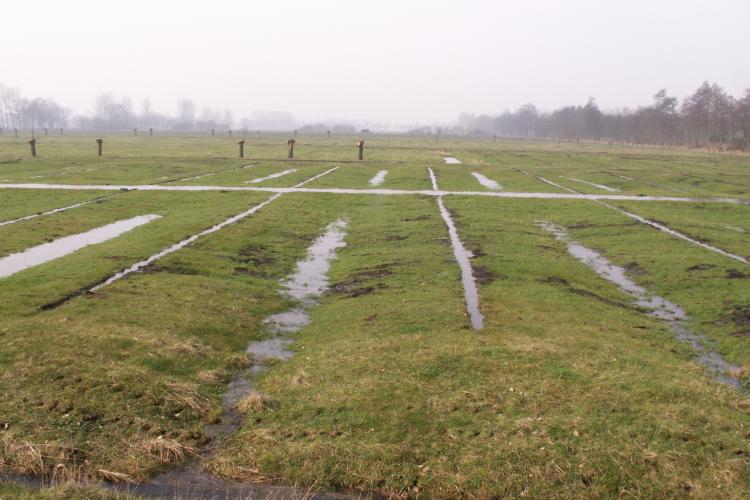You can abduct too much water with drainage and ditches.
Too little is certainly disastrous for agriculture and horticulture. But for that too, inventive ancestors devised useful solutions all over the world centuries ago. A pond at the lowest point is surely a good idea to collect and store rainwater. Canals and puddles were also dug at water mills to buffer sufficient supplies for milling. Aquatic plants and shrubs on the banks can provide shade and delay evaporation.
Water basements or citernes have been used in the Middle East and around the Mediterranean for 7,000 years. Castles on top of a rock also used this method (to still have stock even when besieged). These are jobs to work on together with an entire community. Even the Roman aqueducts and the Iranian qanats often buffered water in such reservoirs. Water basements were also laid in the Low Countries, often at churches that had a large roof area to collect rain. A (rain) well can suffice for a family. Nowadays, often a lot of barrels connected in cascade are used.
In Spain (Andalusia) the aljibe has been used for 2,000 years. Gullies in the slope lead the rainwater to a well that is protected against evaporation, pollution and animals (livestock) with a little house. (The āb anbār was used in Iran.)
Terracing is known from Peru to China. To prevent water and soil from draining, flat beds are made in the slope, sometimes resulting in huge staircases. Ridges or walls follow the steepness in the landscape. In modern agriculture, contour plowing is done in a similar way to limit erosion. In Limburg (Ne and Be) you can still find remains of “graften” (small and steep contour lines with dense bushes) that had the same function in the hilly landscape.
In Kenya there are projects that make dry soils fertile in a similar way. Justdiggit is a project in which communities dig (1,000’s!) holes in slopes to collect run-off rainwater. In this way it can infiltrate on site and those regions are greened. Fill the gaps with organic material (compost) and we recognize the Zai technique again.
 ‘Flooded meadows’ were made in our region. Brook-fed canals with parallel lateral taps were used to feed nutrient-rich (often calcium-rich, for hayland) water to poorer areas. A system of bulkheads on the side channels ensured that each site in turn received what it was entitled to. In many landscapes the (often dozens of) parallel canals can still be recognized. Often they were common use, were served by a municipal manager.
‘Flooded meadows’ were made in our region. Brook-fed canals with parallel lateral taps were used to feed nutrient-rich (often calcium-rich, for hayland) water to poorer areas. A system of bulkheads on the side channels ensured that each site in turn received what it was entitled to. In many landscapes the (often dozens of) parallel canals can still be recognized. Often they were common use, were served by a municipal manager.
Floating gardens
Instead of bringing water to the garden, you can also bring the garden to the water.
Already in pre-Columbian times, the Aztecs were weaving rectangular rafts of reeds and filling them with sludge. The Chinampas (floating gardens) are one of the most intensive and productive farming systems ever developed. They were anchored by planting willows that took root in the marshy bottom of the lake.
Bangladesh has resumed the age-old technique of gardening on water. The rafts are made from bamboo sticks and (2 layers) water-purifying water hyacinth (Eichhornia crassipes) that hold sludge between the roots and form an earth layer. In addition, cow dung, sludge and compost come on top for the garden.
Floating gardens also exist on Inle Lake in Myanmar, Dal Lake in India and Sun-Moon Lake in Taiwan.
Modern hippies have made islands in the Netherlands and Germany from styrofoam, also from plastic bottles. It once seemed like a good idea, but I hate those plastics in our environment and food. Forget it!
Cloud milkers and mist catchers can also harvest water from the air.
